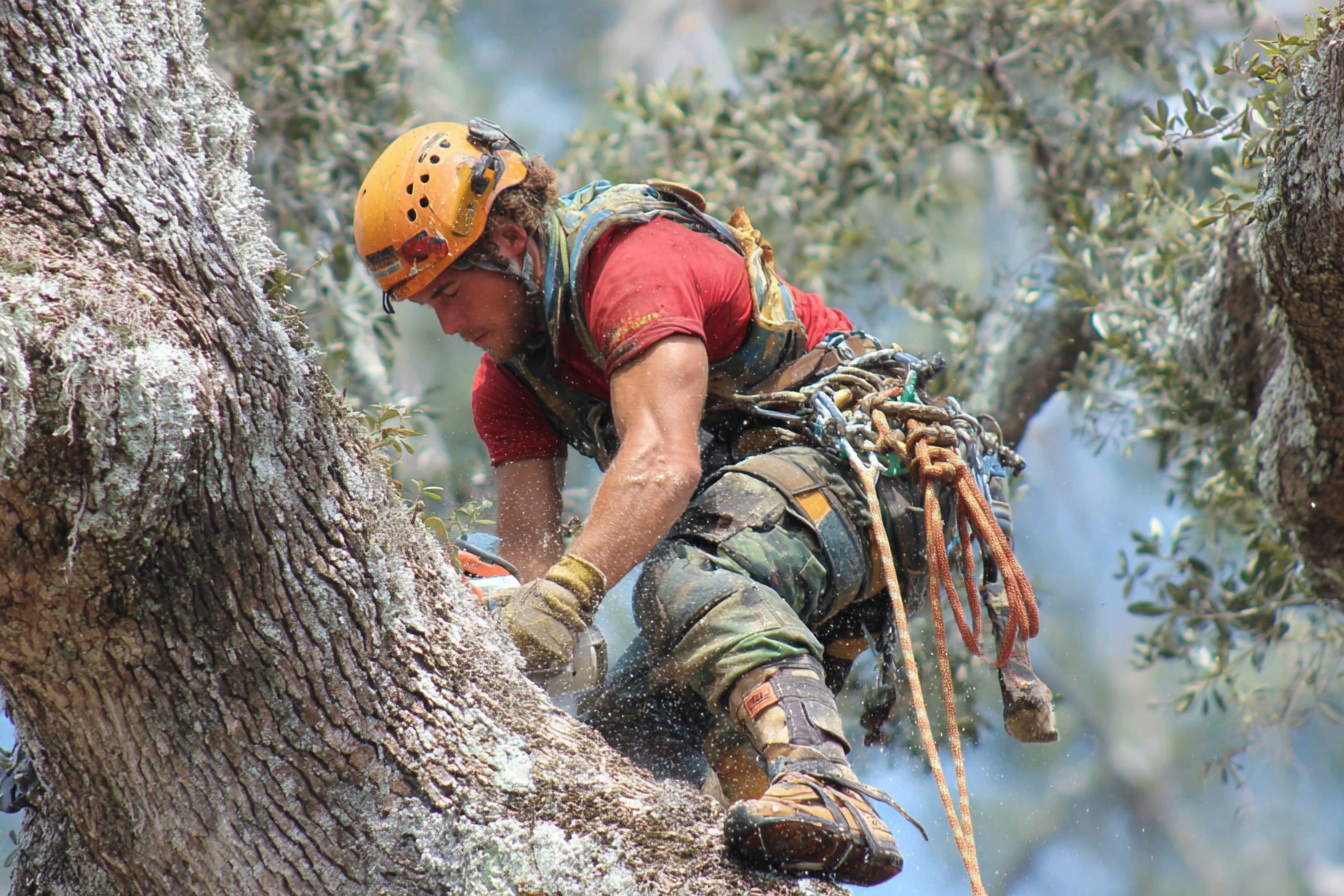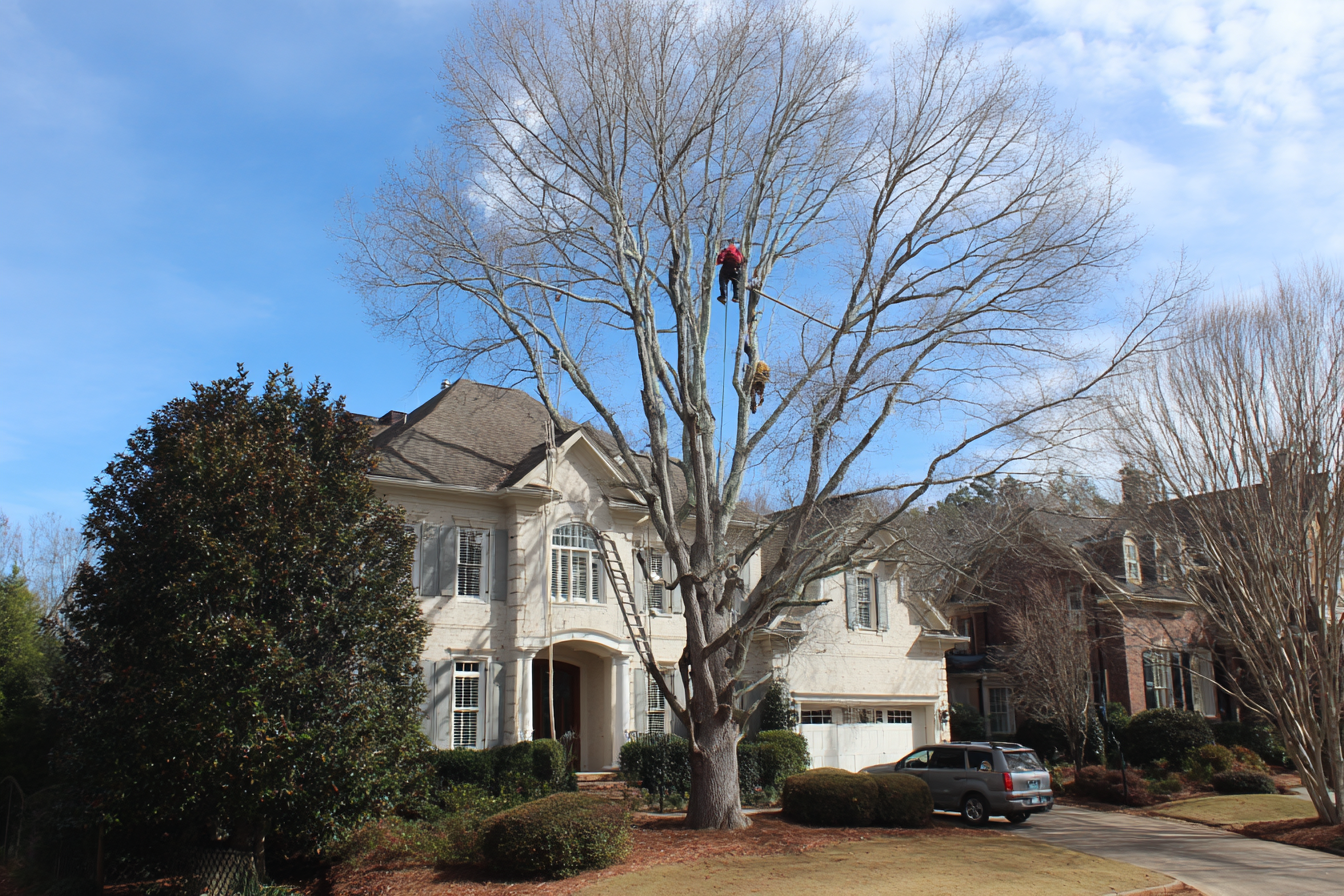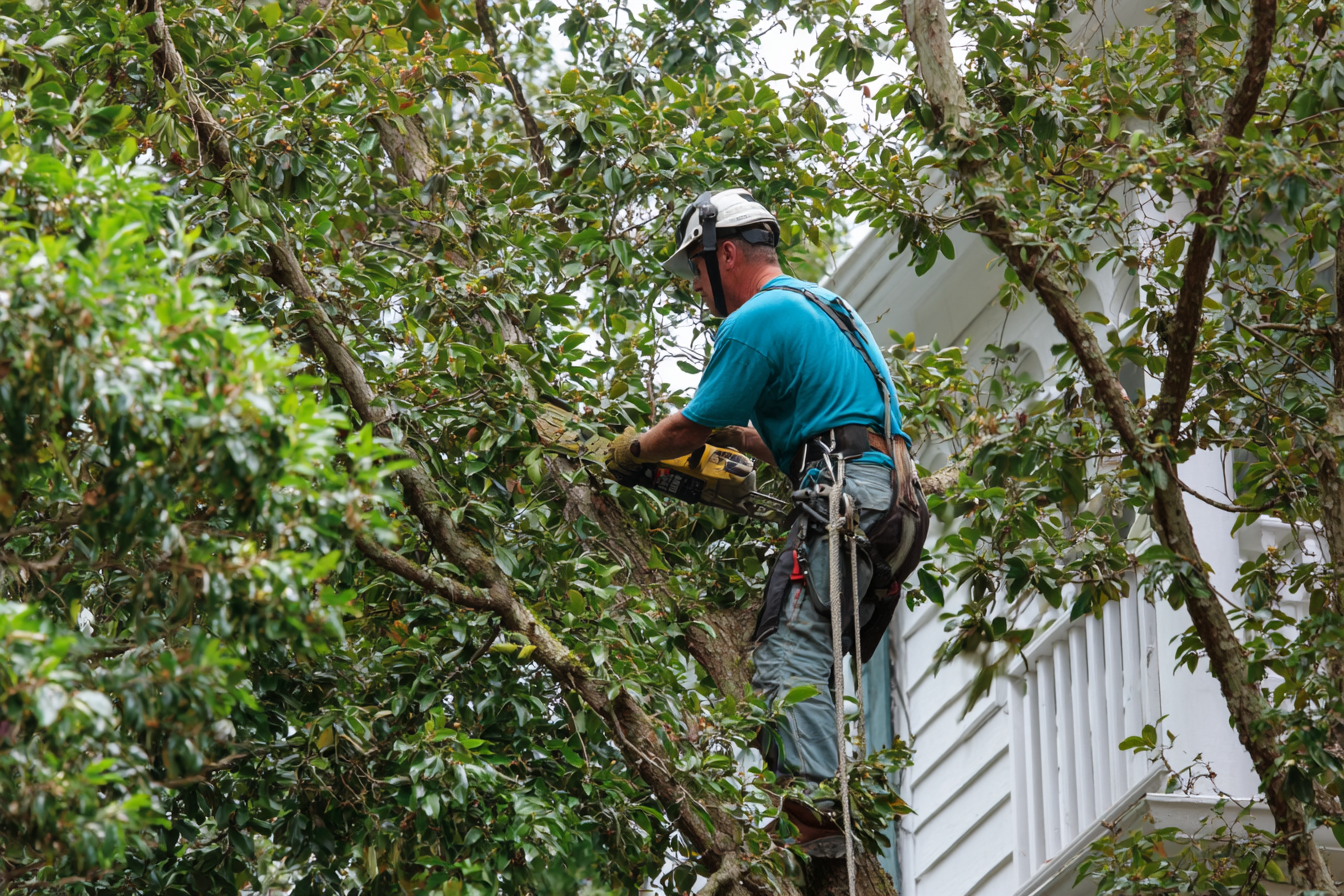
The sounds of a Georgia storm can be unnerving. The wind howls, the rain pours, and sometimes, the worst happens: a tree falls. Maybe it’s on your roof, your fence, or your car. Or perhaps it’s a neighbor's tree that has landed on your property. When you're standing in the aftermath, surveying the damage, a single thought often comes to mind: "Now what?"
Dealing with the physical debris and damage is one challenge. Navigating the world of insurance claims is another. It can feel like an entirely different kind of storm, one filled with paperwork, legal jargon, and uncertainty. In Georgia, the rules and laws surrounding fallen trees can be particularly confusing. This guide is designed to demystify the process, empower you with knowledge, and help you get back to normal as quickly as possible. We will walk you through the specifics of Georgia law, explain what your homeowner’s insurance typically covers, and provide a clear, step-by-step process for filing a successful claim.
Understanding the Key Players: You, Your Neighbor, and the Law
Before you pick up the phone to call your insurance company, it's crucial to understand a key principle of Georgia law. Many people assume that if their neighbor's tree falls on their property, the neighbor's insurance is responsible. This is a common misconception.
Georgia's "Act of God" Rule
The foundational legal principle in Georgia is that if a healthy tree falls due to a natural, unpredictable event, often referred to as an "Act of God" like a major storm, high winds, or a lightning strike, the owner of the property where the tree lands is responsible for the cleanup and damage.
This means that if a healthy tree from your neighbor's yard falls onto your home, your homeowner's insurance policy is the one that will cover the damage and removal costs, not your neighbor’s. You will still be responsible for your deductible.

The One Major Exception: The Negligence Clause
There is a significant exception to this rule. If the tree that fell was "visibly dead or diseased" and your neighbor was aware of the hazard, then the liability may shift. Proving negligence is the key here. It's not enough to simply say the tree looked bad. You need to provide evidence that your neighbor knew or should have known about the tree's condition.
How to Prove Negligence
Proving negligence requires documentation. This is where a proactive approach can save you a lot of future headaches.
- Written Communication: A polite, but formal, letter or email to your neighbor outlining your concerns about a specific tree. This creates a documented paper trail.
- Photos and Videos: Take dated photos or videos of the tree showing clear signs of decay, such as large, dead limbs, a hollow trunk, or significant fungal growth.
- Professional Assessment: The strongest evidence comes from a certified arborist's report. A professional can provide a written opinion on the tree's health and the risk it poses.
Without this kind of documentation, your insurance company will likely default to the "Act of God" rule, and you will be responsible for the claim through your policy.
What Your Homeowner's Insurance Actually Covers
Standard homeowners insurance policies in Georgia typically cover tree damage when a tree falls on a "covered structure."
Covered Structures and Perils
- Dwelling Coverage: This is the portion of your policy that protects your physical home. If a tree falls on your house, the damage to the structure is covered.
- Other Structures Coverage: This covers detached structures on your property, such as a detached garage, shed, or fence. Damage to these structures is typically covered.
- Personal Property Coverage: This covers your belongings. If a tree crashes through your roof and damages furniture or electronics, your personal property coverage will apply.
Most policies will cover damage caused by common perils like wind, hail, fire, and lightning. However, they almost universally exclude damage caused by negligence or a lack of maintenance. This is why a dead or diseased tree falling on your home can be a problem. Your insurance company may determine the damage was preventable and deny the claim.
What About Tree Removal?
This is a frequently asked question, and the answer depends on a few factors.
- If the Tree Damages a Covered Structure: If a fallen tree damages your home, fence, or other structure, your policy will likely cover the cost of removing the tree. There is often a sub-limit for tree removal, typically around $500 to $1,000 per tree.
- If the Tree Does Not Damage Anything: If a tree falls in your yard and doesn't hit a covered structure, your insurance policy will almost certainly not pay for the removal. The exception to this is if the tree blocks a driveway or a ramp for the handicapped. In those specific cases, some policies may offer limited coverage for removal.
It is critical to review your specific policy documents or speak with your insurance agent to understand the precise limits and coverages for tree-related incidents.
A Step-by-Step Guide to Filing Your Claim
Filing an insurance claim can be a stressful and confusing process, especially when you're already dealing with the emotional and physical toll of property damage. Following these steps can help you navigate the process efficiently and successfully.
Step 1: Prioritize Safety
First and foremost, ensure that you and your family are safe. Avoid the damaged area, as fallen trees can create unstable conditions, and live power lines may be a hazard. Do not attempt to move large, heavy branches yourself. If there are downed power lines, contact your utility company immediately.
Step 2: Document Everything
This is arguably the most important step. Your insurance company will rely on your documentation to process the claim.
- Take Photos and Videos: Get a comprehensive view of the damage. Capture the fallen tree, the damage to your home and other structures, and the general scene. Take close-up shots of the damage and wide-angle photos to show the full scope.
- Write Down the Details: Note the date and time of the incident, the weather conditions, and a clear description of what happened. Be as detailed as possible.
- Keep Receipts: If you have to make any temporary repairs to prevent further damage—such as covering a hole in your roof with a tarp—keep all receipts for the materials and labor. These costs may be reimbursed by your insurance company.
Step 3: Call Your Insurance Company
Contact your insurance agent or the claims department as soon as it is safe to do so. Provide them with all the details you've collected. They will provide you with a claim number and assign an adjuster to your case. The adjuster will be your main point of contact and will guide you through the rest of the process.
Step 4: Get a Professional Estimate
Your insurance company will require a professional estimate for the tree removal and repair work. This is where a reputable tree service company becomes an invaluable partner. An expert can assess the situation, provide a detailed and accurate quote, and even assist with the documentation.
When choosing a company, ensure they are:
- Licensed and Insured: A reputable company should have general liability and workers' compensation insurance. This protects you from liability if a worker is injured on your property.
- Experienced in Emergency Services: Storm damage cleanup and tree removal are specialized jobs that require specific equipment and expertise.
A good tree service will provide a clear, written estimate that itemizes the costs for removal, debris cleanup, and any other necessary work.
Step 5: Meet with the Adjuster
The adjuster will come to your property to inspect the damage. Provide them with all of your documentation, including photos, videos, and the estimate from your tree service. Be ready to answer their questions about the incident and the condition of the tree before it fell.
Step 6: Review the Settlement and Get the Work Done
Once the adjuster approves your claim, you will receive a settlement check, minus your deductible. In some cases, the insurance company may pay your chosen contractor directly. Once you have the green light, you can have the tree service begin the work.

Why a Professional Tree Service is Your Best Ally
When a tree falls, the last thing you want to do is become an expert on insurance claims and tree removal. Partnering with a professional tree service like Georgia Pro Tree Services can make the entire process smoother and less stressful.
Expertise and Safety
A certified arborist can provide an accurate assessment of the damage and the health of the remaining trees on your property. They have the equipment and training to safely and efficiently remove large, dangerous limbs or entire trees. Attempting to do this yourself is extremely hazardous and could lead to further damage or injury.
Documentation for Your Claim
Professional tree services understand the insurance claim process. They can provide you with a detailed, line-itemized estimate that your insurance company will understand. They can also take and provide professional photos of the damage for your claim file.
Emergency Response
After a major storm, you need a rapid response. A professional tree service offers 24/7 emergency services to address immediate hazards, such as a tree on your home or blocking a driveway. They can secure the area and begin the cleanup process, preventing further damage and restoring safety to your property.
Peace of Mind
Navigating a complex insurance claim on your own can be overwhelming. By working with a reliable tree service that has experience in handling insurance claims, you gain a trusted partner who can help you every step of the way, from the initial assessment to the final cleanup. This allows you to focus on what’s important: getting your life back to normal.
Conclusion: Get Back on Your Feet with Confidence
A fallen tree is a stressful event, but it doesn't have to be a financial disaster. By understanding Georgia's specific laws, documenting your claim meticulously, and partnering with a professional and experienced tree service, you can navigate the insurance process with confidence. Don't let the confusion of an insurance claim add to the stress of a fallen tree.
Ready to start the recovery process? Contact Georgia Pro Tree Services today for a professional, no-obligation estimate and expert assistance with your tree damage insurance claim. Our licensed and insured team is here to help you safely and efficiently restore your property.
FAQs About Insurance Claims from Tree Damage
Q: If a tree from my yard falls on my neighbor's house in Georgia, whose insurance pays?
A: In most cases, your neighbor's homeowner's insurance will cover the damage and the cost of tree removal. This is because, under Georgia law, the responsibility for the damage lies with the property owner where the tree lands. The only exception is if your neighbor can prove you were negligent by failing to address a visibly dead or diseased tree you were aware of. In that case, your liability coverage may come into play.
Q: Does my homeowner's insurance cover tree removal if the tree didn't hit anything?
A: Generally, no. Most standard homeowner's insurance policies in Georgia will not cover the cost of removing a tree that falls in your yard without causing damage to a covered structure (like your house, garage, or fence). The only common exception is if the fallen tree is blocking your driveway or a wheelchair ramp, in which case some policies may provide limited coverage for removal.
Q: What is the average coverage for tree removal in Georgia homeowners' policies?
A: The coverage for tree removal is often limited, even when the tree causes damage. According to industry standards and many insurance providers, the coverage is typically around $500 to $1,000 per tree. This is a sub-limit and is separate from the overall coverage for the structure damage. It's always best to check your specific policy or ask your agent about these limits.
Q: Can a tree service company help me with my insurance claim?
A: Yes, a reputable tree service can be a great asset during the claims process. They can provide a detailed, itemized estimate that is tailored to meet the requirements of insurance companies. They can also assist with the professional documentation needed for a claim, such as taking photos of the damage and outlining the scope of work. Many tree service companies have experience working directly with insurance adjusters, which can streamline the process.
Q: What if my insurance company denies my claim?
A: If your claim is denied, you should first request a clear, written explanation from your insurance company detailing the reason for the denial. Review this explanation carefully and compare it to your policy. If you believe the denial is incorrect, you can appeal the decision. This may involve providing additional evidence, such as an arborist's report or a more detailed professional estimate. In complex cases, you may need to seek legal counsel to understand your rights and options.

We're your local tree pros!
Georgia Pro Tree Services takes the highest quality of care when servicing your trees. Call us to find out how we can help you keep your yard in top shape.



